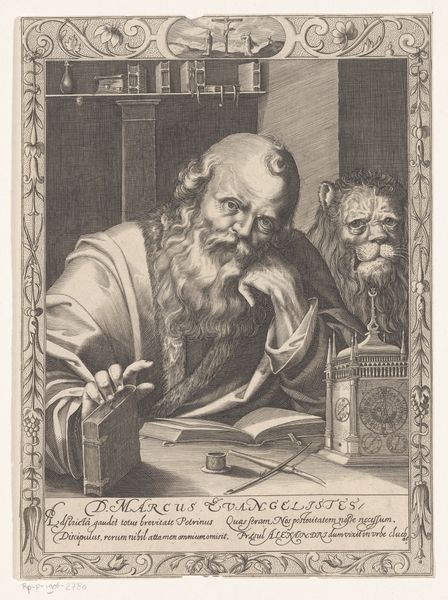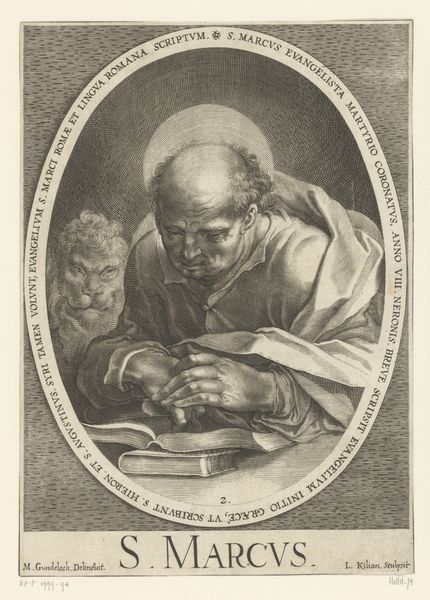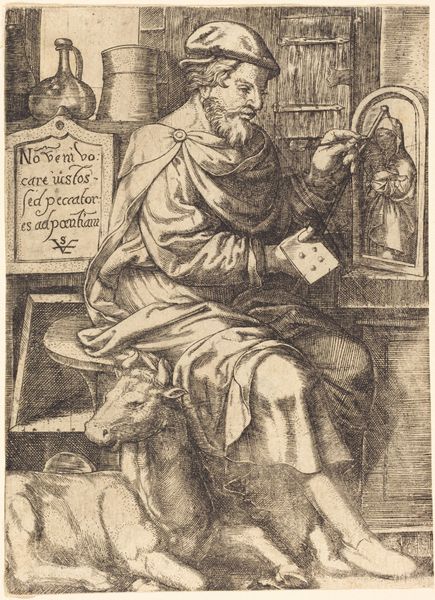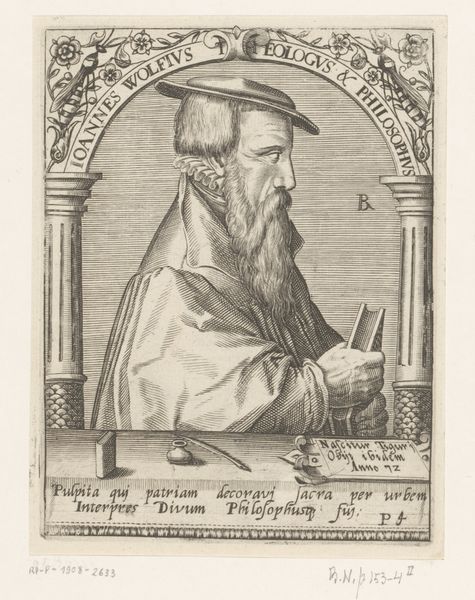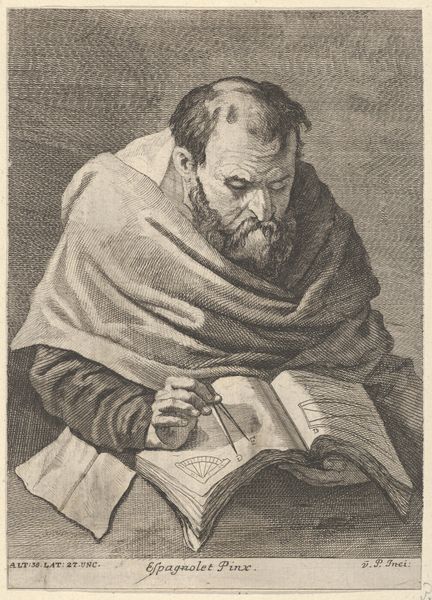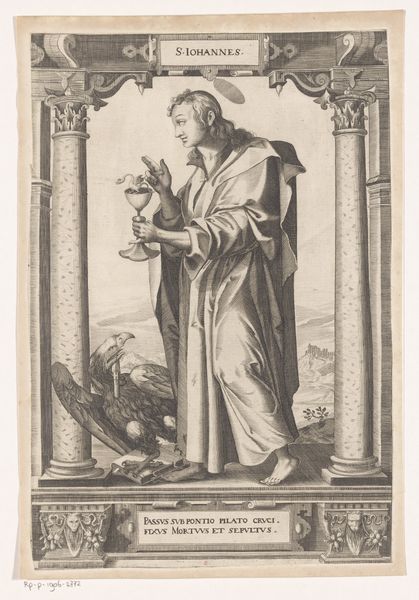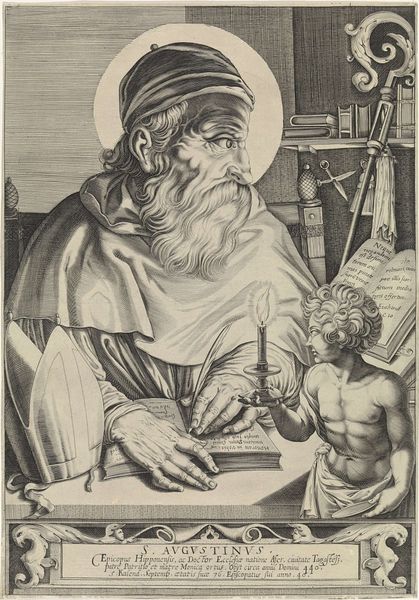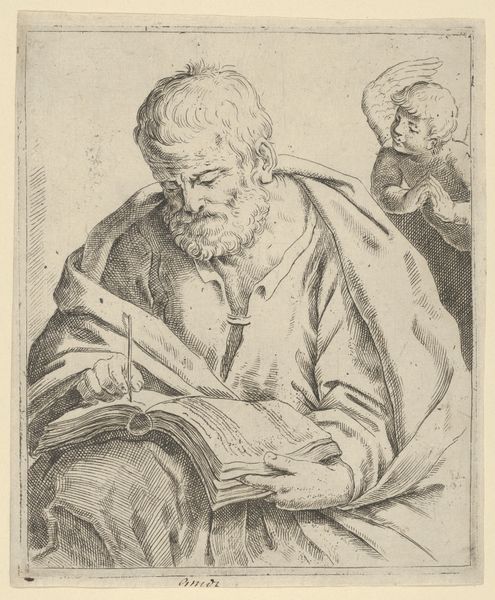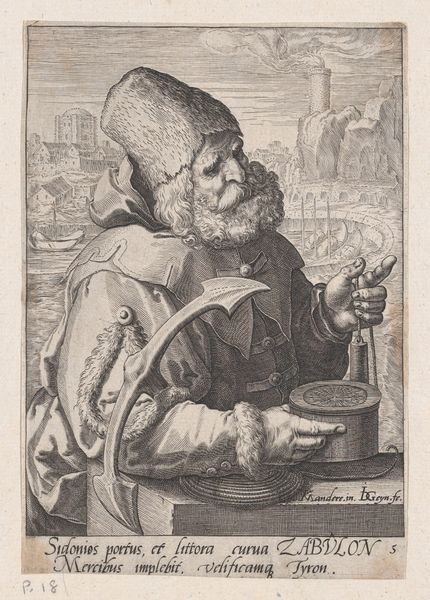
engraving
#
portrait
#
baroque
#
old engraving style
#
caricature
#
portrait reference
#
limited contrast and shading
#
portrait drawing
#
history-painting
#
engraving
Dimensions: height 293 mm, width 217 mm
Copyright: Rijks Museum: Open Domain
Editor: This engraving, "Lucas de evangelist," created in 1615 by Dietrich Krüger, has a quiet, studious feel to it. The detail is impressive. I’m intrigued by the ox behind St. Luke. What is it meant to convey? Curator: It's essential to recognize the ox as the symbol of St. Luke, deeply rooted in Christian iconography, but beyond the symbol it is useful to understand the history painting genre, very popular at the time, often with religious undertones or open meaning, so it's more than simple illustration. How does its inclusion affect the way viewers at the time, more attuned to these visual cues, would have understood the image? Editor: It gives him an identifying attribute, like a halo. It creates a visual context related to the Bible. How would Krüger have expected his audience to interpret it at the time, compared to us now? Curator: In 17th century Europe, prints were affordable art for middle classes; this piece would have carried layers of meaning tied to religious literacy and saintly symbolism. Patrons would have grasped St. Luke as not only an evangelist but also as an artist himself, emphasizing the divine inspiration behind artistic creation. Editor: So the image functions as a statement on artistic practice as much as it is religious representation? Curator: Exactly. The printing press had enabled a broad distribution of art, therefore works like these functioned on the social function of image circulation and a commentary of that. Look closer; What details strike you about the objects surrounding Luke? How would their interpretation differ today? Editor: The candle suggests both inspiration and the late hours of dedicated work. And while to us, these may feel like props in a constructed portrait, at that moment, they were also conveying religious authority within that social, cultural context. I never considered how essential understanding an audience is. Thanks for opening my eyes to that. Curator: Considering the intended audience transforms how we read and engage with these images, broadening our own appreciation of their artistic and cultural legacy.
Comments
No comments
Be the first to comment and join the conversation on the ultimate creative platform.
